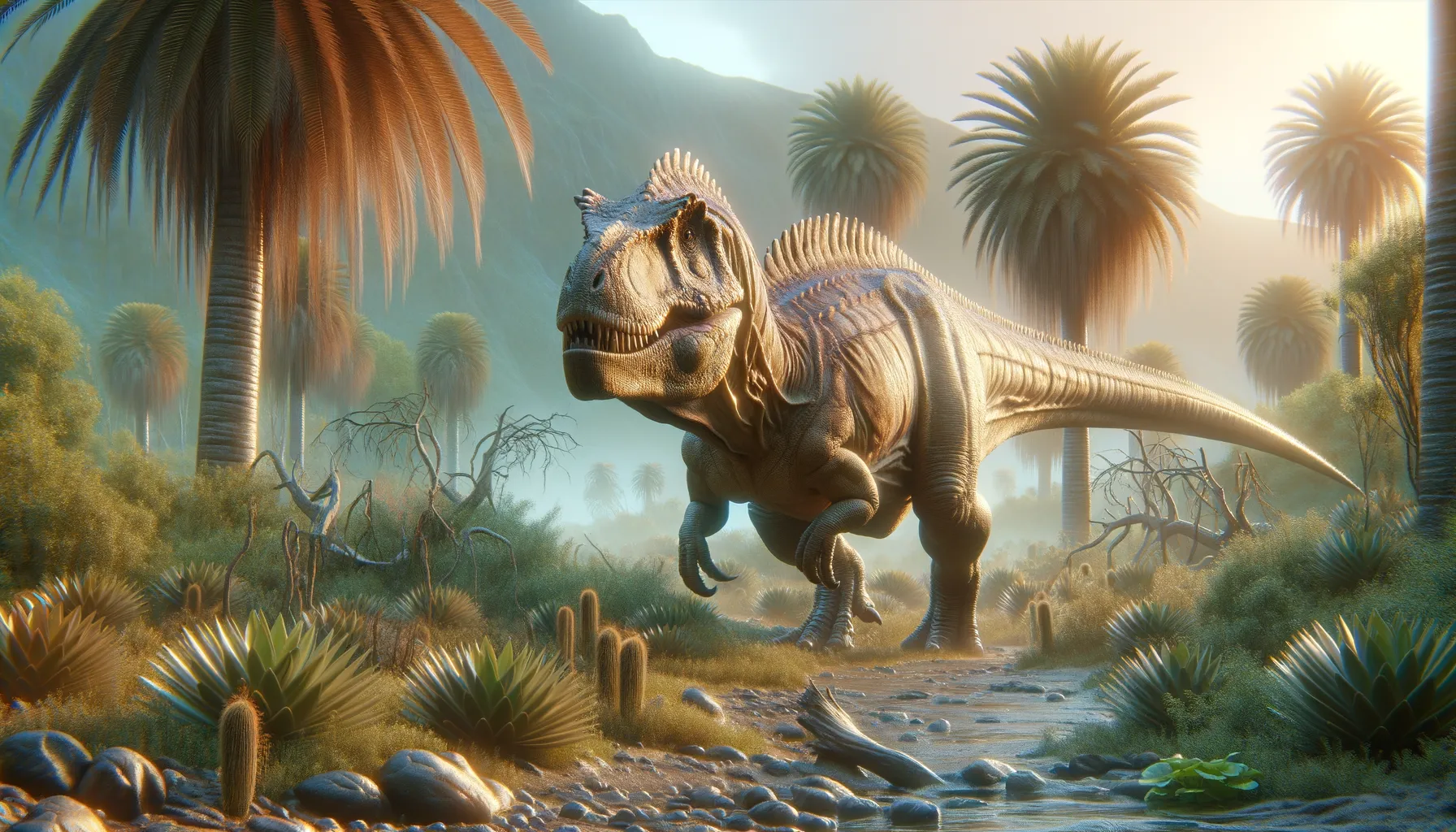
Denversaurus
Armored herbivore of the Cretaceous era.
Period
Cretaceous
Length
Measured around 20 to 25 feet long.
Height
Reached approximately 4 to 5 feet at the shoulders.
Weight
Weighed about 3 to 4 tons.
Denversaurus was a heavily armored dinosaur that lived towards the end of the dinosaur era. Known for its extensive body protection with bony plates, it was a herbivorous creature and part of the family known as nodosaurids. This dinosaur thrived in North America, likely moving slowly through its environment, feeding on low-lying plants. Its fossil record helps scientists understand the diversity and adaptations of armored dinosaurs during the Late Cretaceous period.
Diet
Denversaurus was herbivorous, feeding on low-lying plants and vegetation. It used its beak-like mouth to clip foliage, efficiently processing plant material for sustenance.
Hunting
Though Denversaurus was not a predator, it had to remain vigilant against carnivorous dinosaurs. Its armor provided defense instead of serving any offensive hunting purpose.
Environmental challenges
Living in the Late Cretaceous, Denversaurus faced a changing climate and competition for food resources. Predators posed a constant threat, but its armor offered significant protection. Additionally, environmental pressures may have led to adaptations in its feeding strategies.
Speed
Denversaurus moved slowly due to its heavy armor.
Lifespan
Estimated to live for 20 to 30 years.
First discovery
First discovered in the Late Cretaceous sediments of North America.
Fun Facts
- Denversaurus was a dinosaur that lived around 66 million years ago during the Late Cretaceous period.
- It was an armored dinosaur, part of the Ankylosauria group, known for their protective bony plates.
- Denversaurus was herbivorous, which means it ate plants, and likely a tough one just to munch down all those prehistoric ferns and cycads.
- This dinosaur was named after Denver, the capital of Colorado, where its fossils were first discovered.
- Compared to other ankylosaurs, the Denversaurus had a particularly broad skull, which made it unique.
- Despite having heavy armor, Denversaurus was relatively small, with estimations around 16 feet in length.
- Denversaurus likely used its defensive features to protect itself from large predators like Tyrannosaurus rex.
Growth and Development
Denversaurus likely had a steady growth rate, with young individuals requiring several years to reach full size. This gradual maturation allowed them to develop their protective armor over time. The species may have experienced rapid growth spurts during specific life stages to enhance survival.
Habitat
Denversaurus inhabited lush, vegetative environments with abundant food sources. It lived in forests and floodplains where vegetation thrived, offering a rich diet. Its habitat likely supported a diverse range of wildlife, creating a balanced ecosystem in the region.
Interaction with other species
Denversaurus interacted with various dinosaur species within its habitat, including both predators and other herbivores. It likely shared territory with similar-sized herbivorous dinosaurs, competing for food. Predators would have viewed it as potential prey, necessitating heightened awareness and group dynamics for protection.
Natural lifespan
Denversaurus had a natural lifespan of around 20 to 30 years.
Reproduction
Denversaurus reproduced oviparously, laying eggs in nests built from natural materials. Parental care is speculated, with adults possibly guarding nests or tending to young. Egg size and clutch number would have varied, potentially adapting to environmental conditions.
Social behaviour
This dinosaur could have lived in small groups for increased protection. Social structures would have involved hierarchies or roles within the group to manage food access and security. Being herbivorous, they benefited from group proximity for foraging efficiency and predator awareness.
Fossil locations
Denversaurus fossils have notably been found in the Maastrichtian stage deposits of North America, particularly in regions characterized by rich, late Cretaceous sedimentary rock formations. While not widespread, these fossils provide crucial insights into the geographic distribution of armored dinosaurs towards the end of the Cretaceous period.
